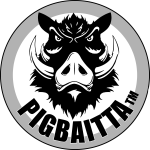Testimonials
Awards | References | Recommendations
Success of the Lower Lachlan Landcare Pig Program:
Project outcomes achieved in the first year included:
- improved condition and extent of over 69,000 Ha of regionally specific communities and habitats
- improved condition and extent of over 124,000 Ha of threatened ecological communities and over 69,000 Ha of threatened species habitat
- over 9,000 Ha of aquatic systems have been managed for water values
- 180 individuals engaged in natural resource management activities
- 73 farming entities implementing sustainable practices, managing over 400,000 Ha through grazing and erosion control
- 4 community workshops
- 95% landholder involvement, with landholders having an extremely positive attitude
-Ben Barlow
Chair of Local Land Services for the Western Division of NSW
Invasive Animals Cooperative Research Centre
2015 Participant’s Prize:


Reference: Peter Michelmore
With the newly developed techniques Barry Kelly has continued to develop and provide expert technical support to other state wide feral pig control projects near Broken Hill and more recently new feral pig activity in the Adelaide Hills and South East regions.
I have no hesitation in recommending Barry Kelly as a coordinator that works well with the local landholders and has developed the technical know how to effectively manage feral pig populations.
-Peter Michelmore
Operations Manager, SA Murray-Darling Basin NRM Board
Landholder Testimonials:
Thanks to the Euston Regional Landcare Pig Project coordinated by Barry Kelly we have not only been able to get on top of our pig problem, but also have been trained for ongoing baiting. Pigs have become an issue on our family farm in the last eight years, not only reducing lambing rates and reducing crop yields, but also damaging native flora and fauna. Without the assistance of Barry Kelly there is no doubt we’d have a much higher abundance of feral pigs.
Best Regards,
Scott Leslie
Gulthul Station
I would like to thank Barry Kelly for his knowledge and skills in dealing with feral pigs and recommend him to anyone with a feral pig problem. We had spotted 3 pigs on the road 2km from our house but did not believe we had feral pigs living on our property. After speaking with Barry through our local landcare group he came out to have a look and was able to clearly identify numerous pig tracks amongst all to sheep tracks around our house dam (only a few hundred meters from our house). Drawing on Barry’s skills and experience we set up a feeding station and trail cameras showing approximately 30 pigs coming into the dam nightly. Using 1080 wheat the entire group was eradicated and our problem solved.
Thanks,
Mark Rowe
Prungle Station
The Euston Landcare Group, together with Barry Kelly had a gathering at Meilman in January 2019 to implement training and site selection of pig control 1080 stations using cut 1000L shuttle containers.
When I met with Barry later it was decided to move the bait station farther away from the houses and sheds, although the site was 1km away, from previous experience secondary poisoning does occur if target animals die, feed (saliva drops) faeces or vomit, where working dogs can consume the secondary poison.
We chose a site a further 2km up the trails, although over 1,000 ewes and some cattle were grazing in this paddock, to reduce the risk of poisoning these vulnerable animals a swinging gate design was constructed to only let pigs obtain access. This was a great success, no non target animals were injured or killed.
Barrys concoction of carasweet was a valuable tool to attract pigs to the bait stations, a two-week free feed was a fundamental to success, attracting large numbers from far and wide.
I feel that we were successful in poisoning 98% of animals that we were free feeding, although hard to count. One site we estimated 80 – 120 pigs of all shapes and sizes were eradicated. The use of infra-red cameras backed up these observations.
Of the sites used this program together with Barry’s expertise, training and past experience, we had very few negatives. We were able to implement free feeding and checking within our daily duties.
Total cost of around 350kg of secondary grain, mobile gates and wire we used elsewhere throughout the year, and around 10 bags (200 kg) 1080 baited grain, I believe no other method of pig eradication has as much success for such little outlay.
The benefit of pig eradication is very evident in lambing percentages and resulting in far lower stock losses of older sheep, young calves are also targeted by these animals, crop damage is reduced, fences not damaged and biosecurity issues are reduced.
Andy Gorman
Meilman & Bill Downs


